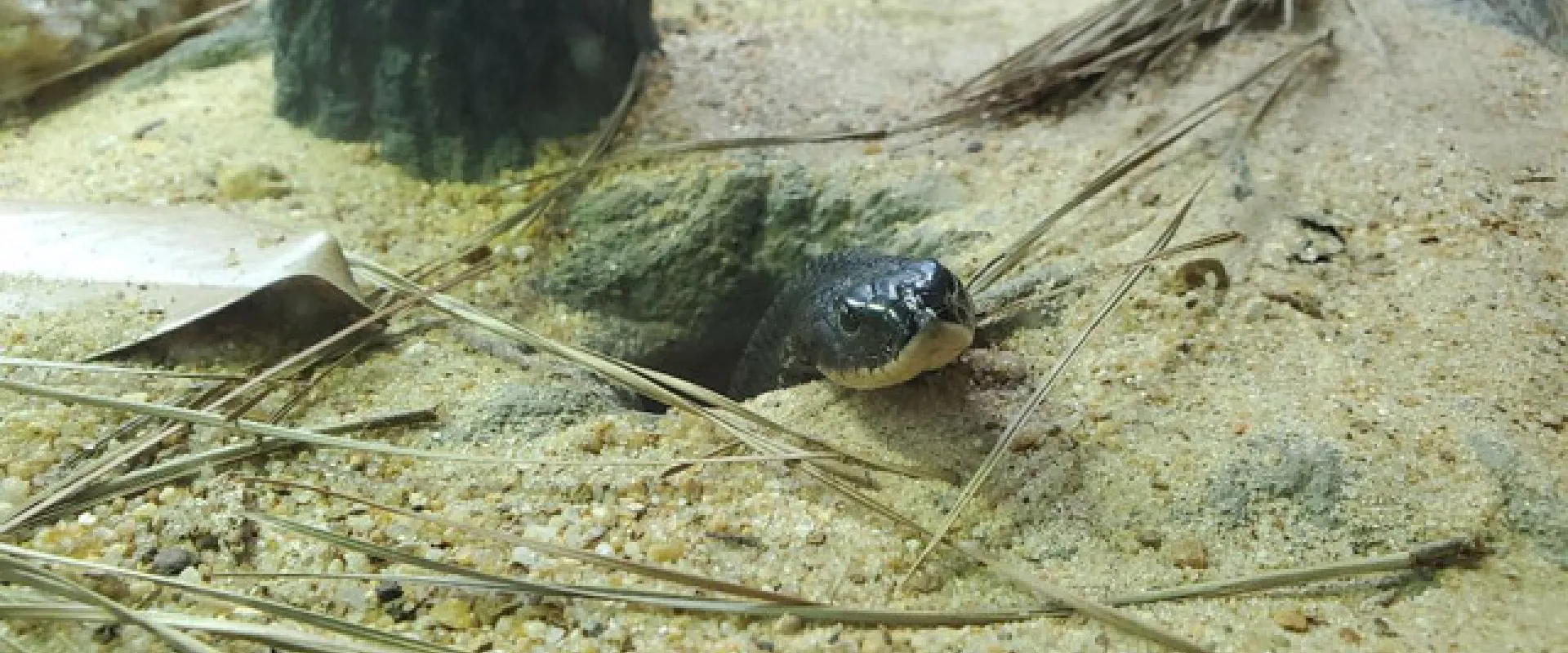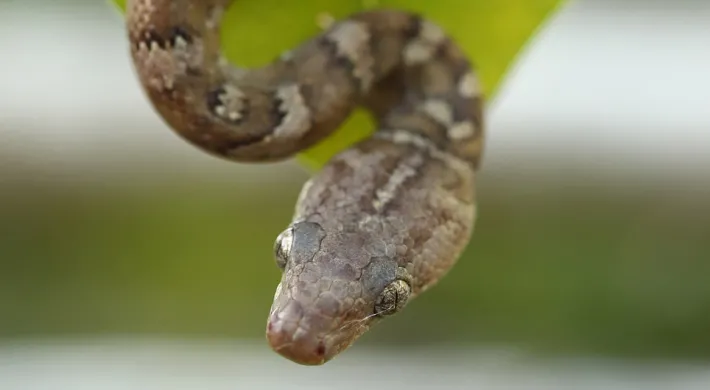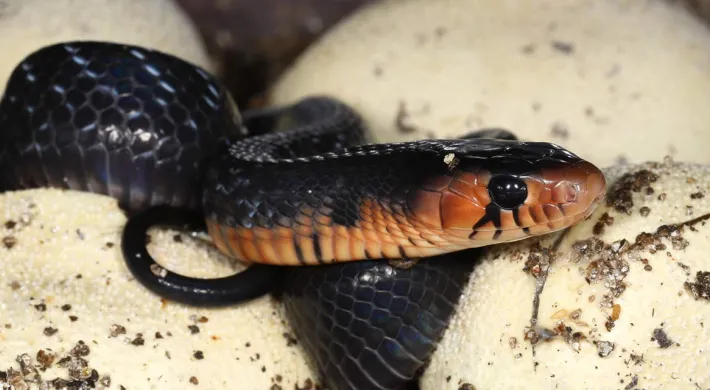Written by Audrey Williams, Zookeeper, North Carolina Zoo
After graduating with my B.S. in biology, I still didn't know what I wanted to do when I grew up. I knew I wanted to work with animals. I moved to Florida, specializing in the care of zoo animals. During my first semester, I studied in the herpetarium with snakes, tarantulas, and large monitor lizards. I will admit, I started rethinking my decision. I thought, "I can get through this and will work the cool animals very soon." Then I met their Eastern indigo snake and realized I was in the right place for me.
He was large with shimmering black scales, but he was also curious and intelligent. Having been a zookeeper for 14 years now, I have worked with all kinds of snakes, from king cobras to little scarlet kingsnakes. Each snake has its own personality, and I have yet to meet a snake I didn't like.
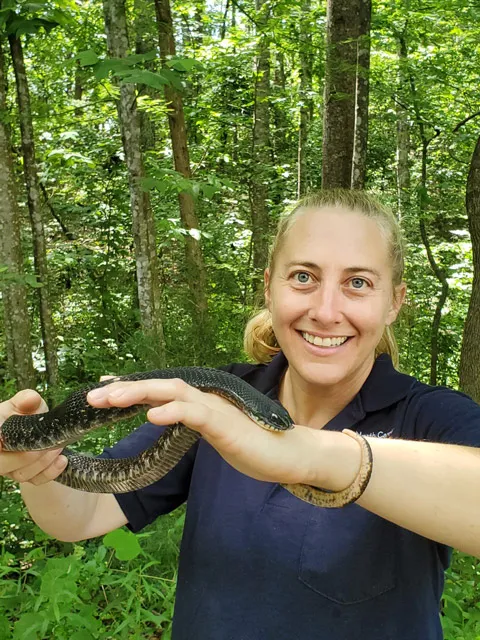
Audrey with an Eastern hognose snake
Conservation doesn't just happen with scientists working in wild places. We have built our towns, homes, and roads in these wild places. Public education is a crucial aspect of conservation. How do our habits affect the environment and the animals around us? Sounds simple, right? Sure, if you want to save polar bears or koalas, but try convincing people to save and live with snakes. This is one of my biggest challenges as a snake keeper, but we cannot be successful in our conservation efforts without the help of all of you.
I am sure there are many reasons why people are uncomfortable with snakes, but I would like to illustrate that snakes feel the same way about us.
What happens when a human and a snake accidentally meet—and you're not at the zoo? Most snakes will hiss, rattle their tail (even if it is not a rattlesnake), and flee. If cornered, the snake excretes foul-smelling musk and eventually strike. These are all defensive behaviors, meaning the snake is doing it in defense of its safety. Hognoses respond a little differently—they "play possum"! At first sight of a threat, hognoses will hiss and spread their necks like little cobras. If this is not enough to end the threat, the frightened hognose will roll onto its back, open its mouth while convulsing before becoming motionless. It lies motionless for a few minutes, hoping the threatening creature leaves.

Pictured Above: Hognose playing "dead"
I would like you to meet Ziggy and Piggy, the Zoo's resident Eastern hognose snakes. They're sisters and currently live in the Sandhills habitat in Cypress Swamp. They came to the Zoo as hatchlings and are three years old now. I have never witnessed Ziggy or Piggy playing dead. Although it would be interesting to see, the way we work with our snakes produces the least amount of stress for the snakes and staff. Hognoses get their name from the shape of their rostrum, or nose—the tip upturns like a pig snout.
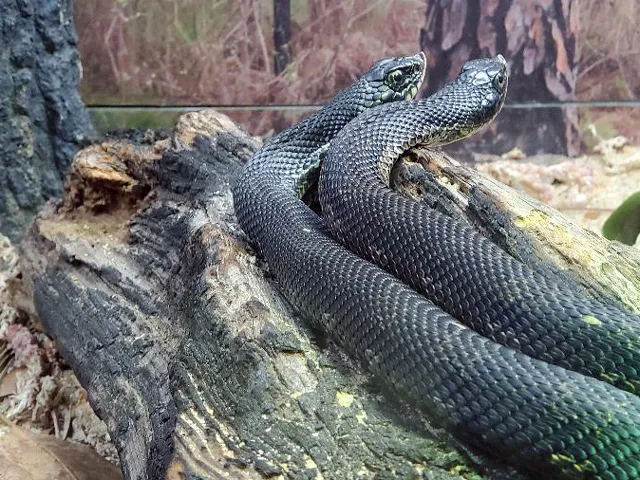
Ziggy and Piggy, Eastern hognose snakes
These faces are sure to win over some hearts! Eastern hognose snakes live throughout much of the eastern United States, so many zoo guests may have the pleasure of coming across one in their yards or on a hike. They are carnivorous and will eat small rodents and lizards, but their food of choice is toads. In defense, toads will puff up with air to become too large to swallow. Hognoses have a pair of enlarged teeth in the back of their mouth just for this purpose. These little rear fangs will pop the toad, making it easier to swallow. Did you know snakes in human care can suffer from fatty liver disease, just like people? Captive-bred rodents have a much higher fat content than the prey hognoses would typically eat in the wild. For this reason, we feed them some small rodents along with different species of small fish. This diet provides the nutrition they need but eliminates all the extra fat.
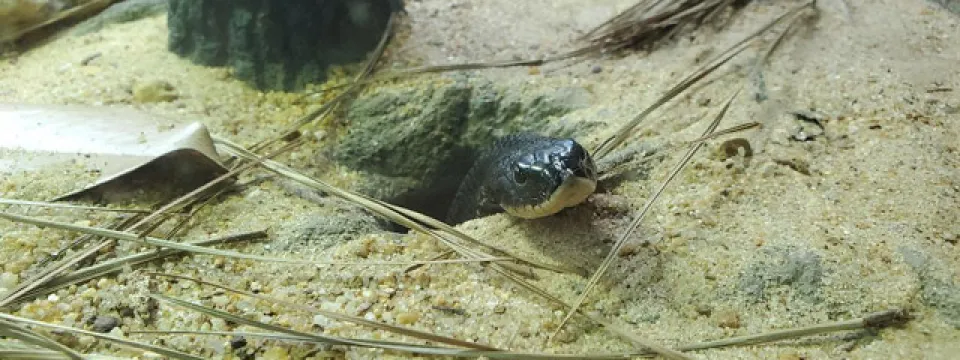
Pictured Above: Ziggy peeking out of the burrow
Snakes are homebodies, and individual snakes have what we refer to as a home range. This is the area they predominantly reside in, which can be much smaller than you imagine, depending on the species. In this range, they know the best places to find food, soak in some sunlight, and safe places to rest. Capturing a snake and moving it far away may seem like a good idea, but it will not know anything about the foreign place it ends up. Next time you encounter a snake in your yard, just consider it another neighbor!
